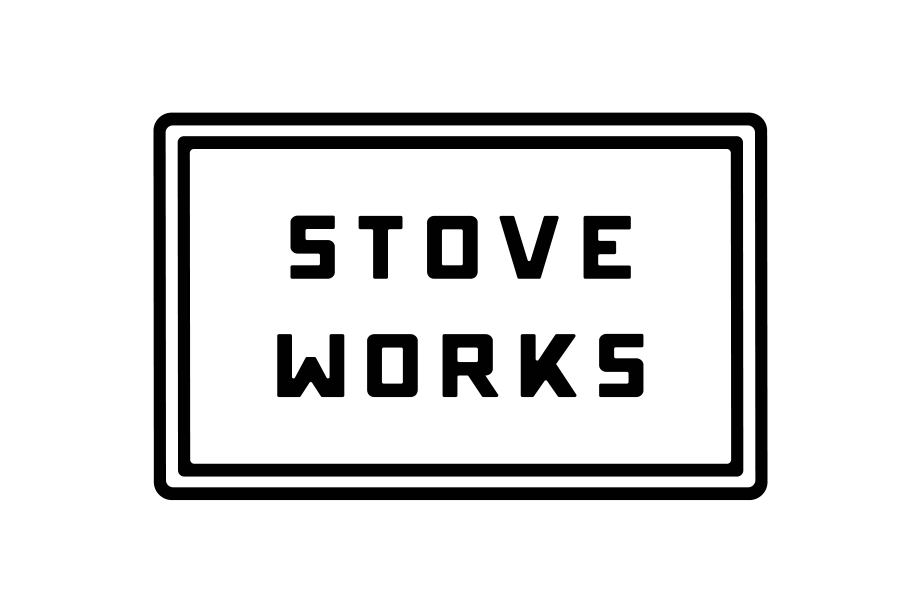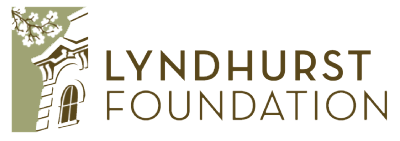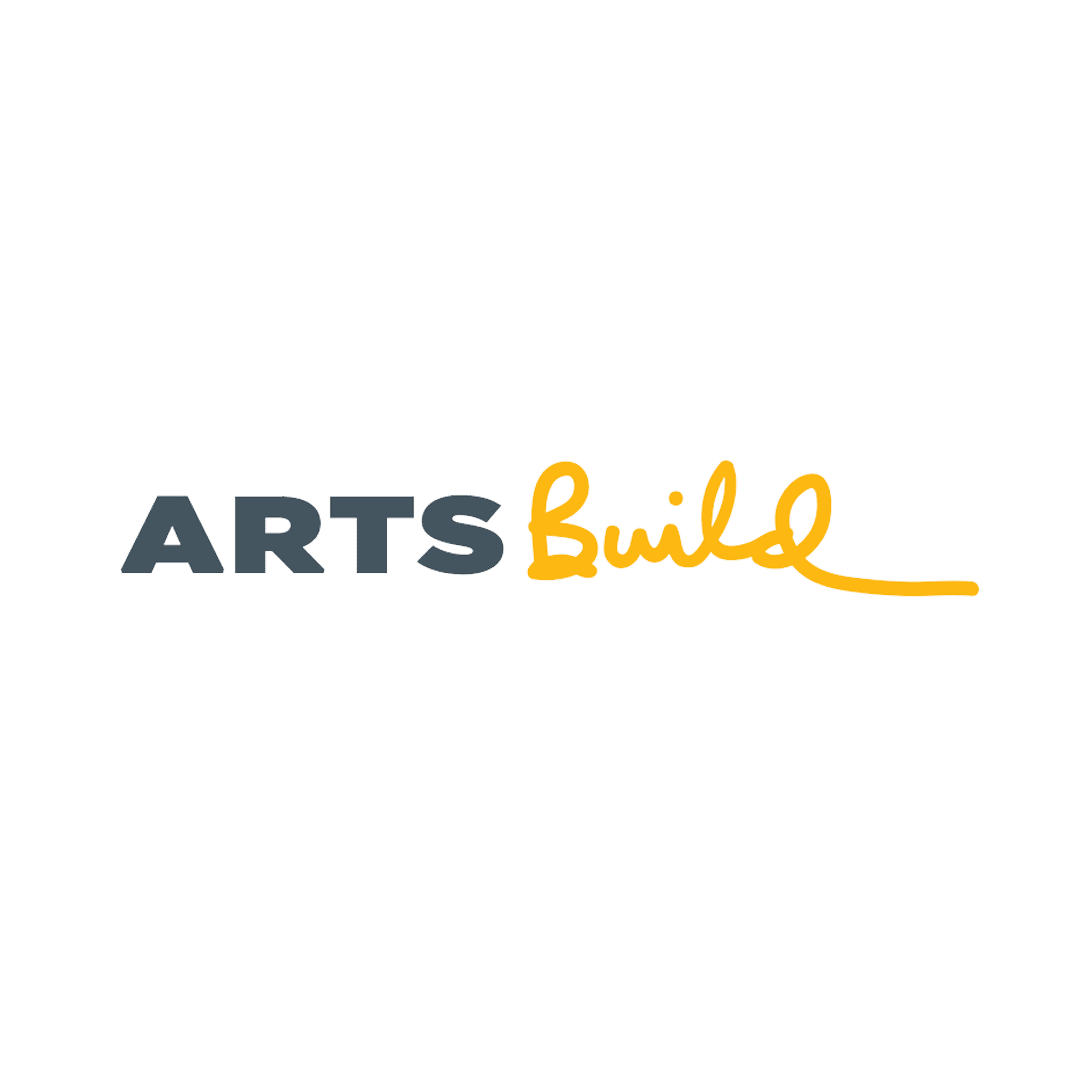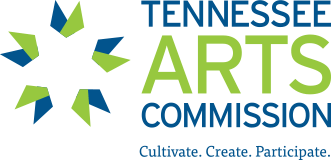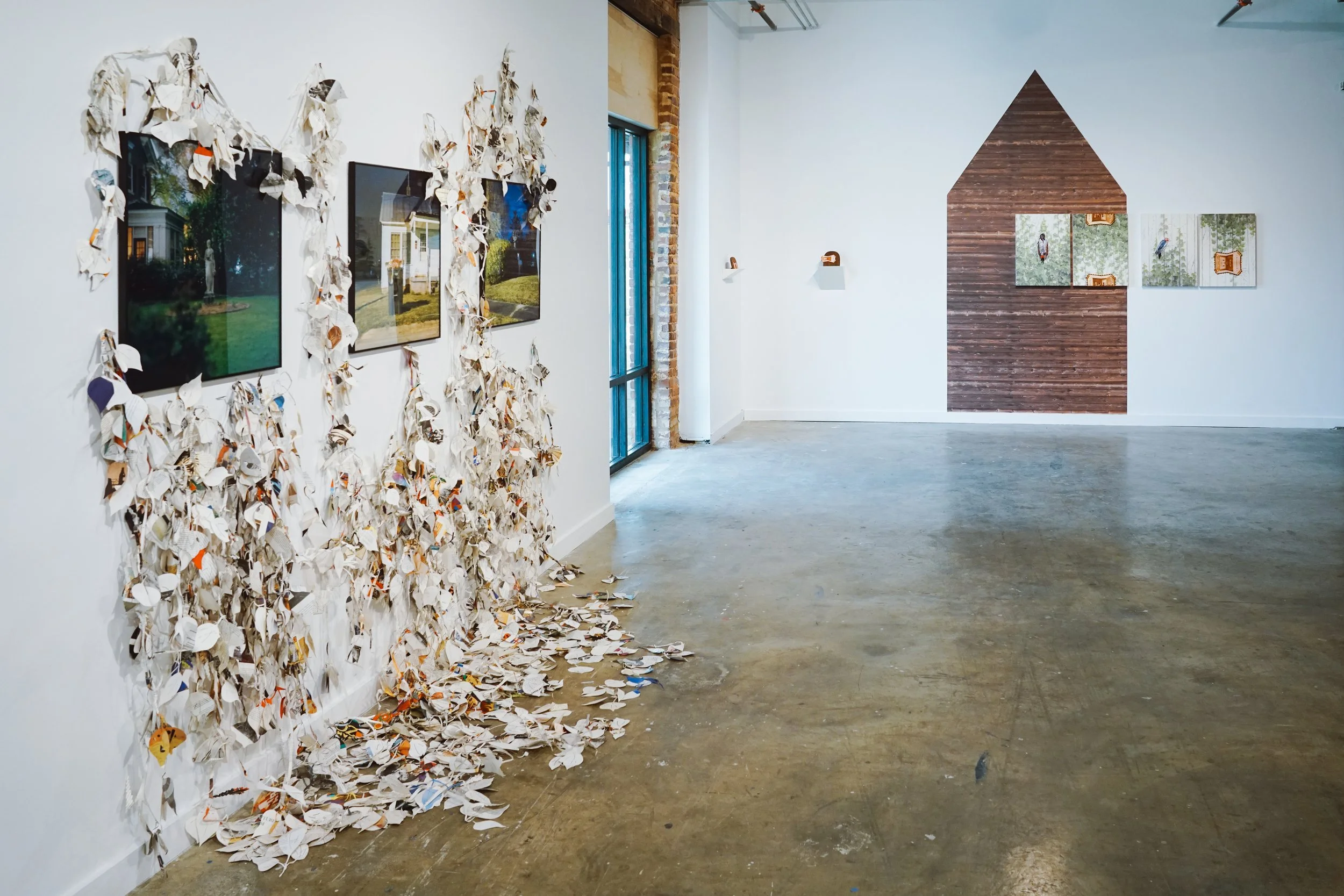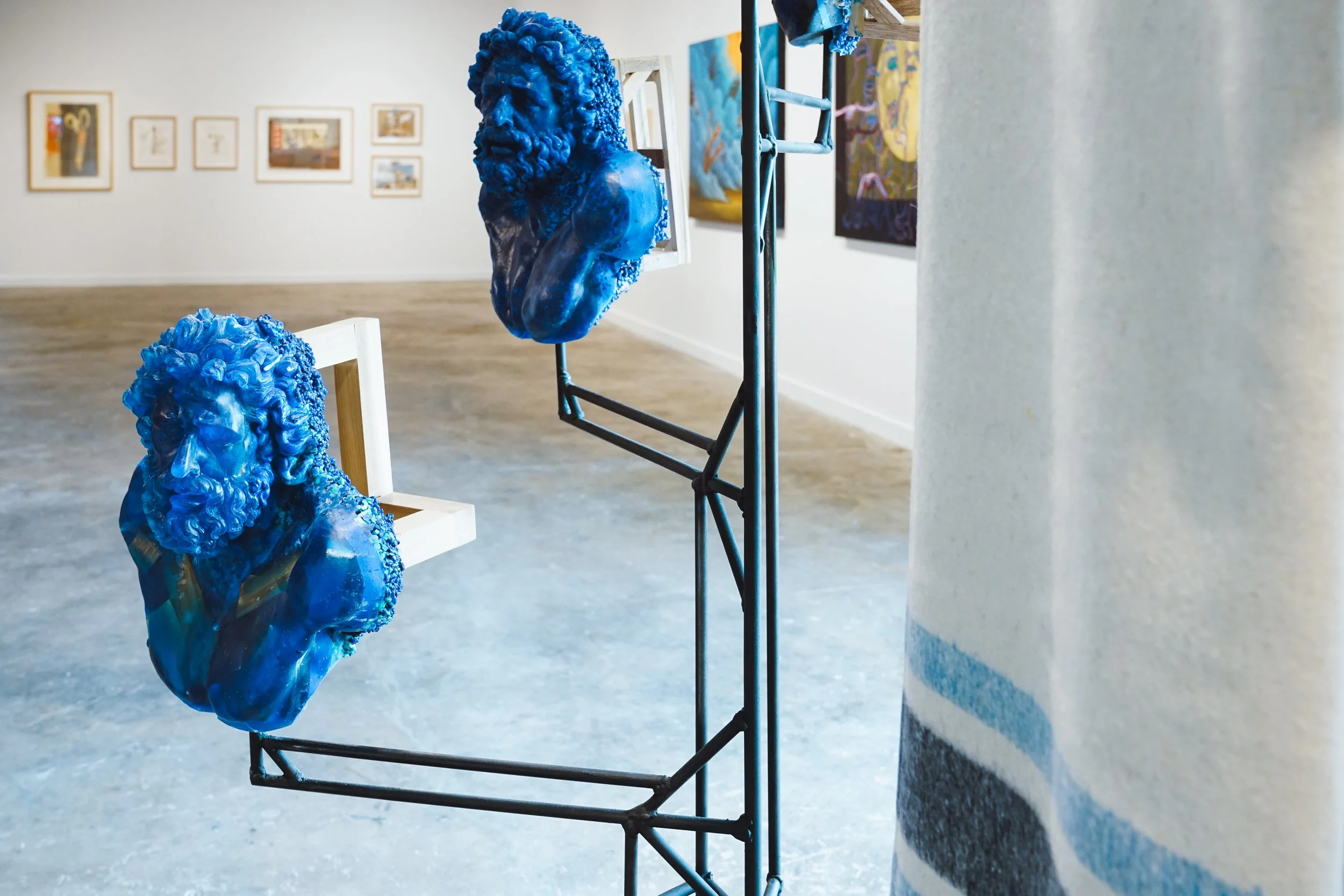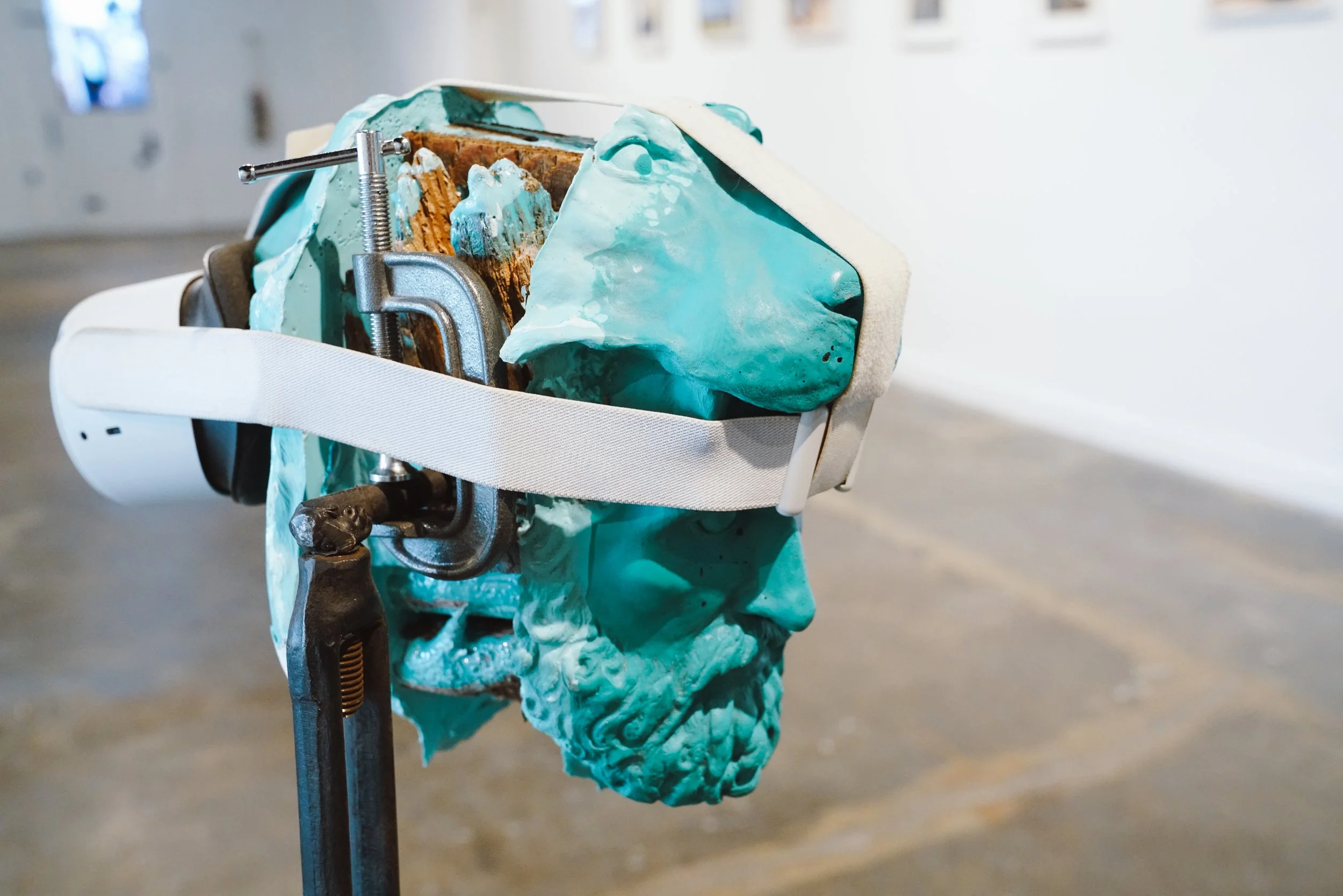an invisible current ∙
an invisible current ∙
AN INVISIBLE CURRENT:
ENGAGING WITH HISTORY
CURATED BY Epiphany Knedler and Tim Rickett
August 1st - November 15th, 2025
Stove works, 1250 E 13th Street, Chattanooga, TN 37408
OPENING RECEPTION August 1st, 6-8PM
“Invention, it must be humbly admitted, does not consist in creating out of void, but out of chaos,”
Mary Shelley, Frankenstein
AN INVISIBLE CURRENT: ENGAGING WITH HISTORY explores visual and material approaches to the past. History is repeated, and legends are exaggerated. Narratives of hardship are often romanticized, creating a feeling of nostalgia or triumph. These repeated stories frequently conceal contentious casualties, shaping our contemporary perspectives. Stories convey the culture, history, and values of people and place. Artists observe and create connections out of the chaos of reality.
The artists in this exhibition use stories, archives, and mythologies of history to inform their creative practices. By borrowing, copying, manipulating, altering, and reinterpreting history, the works both preserve and destroy our preconceived notions. Art is an accessible method for telling stories of the past. AN INVISIBLE CURRENT: ENGAGING WITH HISTORY uncovers the authentic dialogues between artists and their source materials.
-
Young Ae Kim is a UX & UI researcher, graphic designer, educator, illustrator, painter, and international speaker originally from Seoul, Korea, and currently based in South Dakota. With over 18 years of global experience in graphic and product design, she has worked with major international clients including Samsung, LG, Hyundai, Nike, Belvita, Citi Bank, Baskin Robbins, and Sanford Health. Her expertise bridges innovative design with human-centered research, particularly in information architecture, wayfinding systems, and emotional UX/UI design.
Kim is a Professor of Graphic Design at the University of South Dakota, where founded South Dakota’s first and only MFA in Graphic Design. She holds an MFA in Graphic Design from the Savannah College of Art and Design and a Ph.D. in Human Factors Psychology with a UX/UI focus from the University of South Dakota. Her academic research examines how visual design can generate and sustain positive emotional responses across the user journey. She has presented internationally at leading conferences in the U.S., Europe, and Asia.
An award-winning designer and grant recipient, Kim is a member of professional organizations including AIGA, HFES, and AHFE. Her current creative practice includes paintings that blend Asian pop culture imagery with contemporary, news-driven themes, challenging cultural narratives through color, symbolism, and character illustrations.·
My paintings reinterpret contemporary discourse through the disarming lens of children’s book illustration. By drawing on the visual language of cuteness, (soft lines, saturated colors, and familiar fuzzy characters inspired by Asian childhood icons like Studio Ghibli’s Totoro and Spirited Away) I create works that are immediately engaging to children while carrying layered messages for adult viewers.
Children are naturally drawn to these characters. They enjoy the playfulness, develop early visual literacy, and are inspired to create. However, beneath the surface lies a deeper narrative: each painting's title is pulled directly from contemporary news headlines. This duality invites adults to pause, reflect, and engage in dialogue about urgent social issues, filtered through a deceptively sweet, storybook aesthetic.
My body of work functions on two levels: accessible to children for its whimsy and beauty, yet deeply resonant for adults willing to look beyond the surface. I want my paintings to open space for conversation, empathy, and critical thought, to challenge viewers to explore what lies beneath “cute” and how visual narratives shape our perception of the world.
-
Dana Smessaert is a photographer, writer, and death worker who explores history, change, and melancholy themes in their work. Receiving their MFA in Photography at East Carolina University. They are an Adjunct Instructor at Herron School of Art and Design and Grand Canyon University. Dana is on the Pride Caucus Leadership team for the Society of Photographic Education for the second year, working as a reviewer and mentor. Dana was just a juror for the SPE Media Festival LGBTQ+ Division and for ;TLDR exhibition by Midwest Nice. Dana enjoys practicing yoga, hiking, and reading in their free time. They are working on their newest body of work, In the Blue Light, I Died.
·
What I hold above all else is an innate sense of justice. Through art, there is a way to bridge the harsh realities people face today, to be seen and reflected while giving back beauty and hope. Through my writing and visual art, I draw deeply on my experiences in the world and the stories of the many people I have met along the way—a blend of myth and reality.
An Obligation to Do One's Best is an exploration of myth and reality at home in a small southern town. I explore my displacement in the American South by confronting and acknowledging the violence of being a white woman in the South. These portraits houses are monuments of confrontation while perpetuating the romanticism and storytelling the South is known for, while the occupants might be complicit in systemic racism or the victims of 400 years of injustice. A reminder of the parallel between being a neighbor and an outsider.
Kudzu: A History of Art asks who narrated these stories, whose history are we referencing, and where the root of our implications begins. The American South, the house, the name, and the family's history are complicated and seemingly transparent to those on the outside through judgement. However, the stories of those who live here still exist in the space between myth and reality. Using tactics of voyeurism and research, I create these liminal spaces of wonder To ask, does it have to be this?
-
Maggie Callahan (Reese) is a photo-based artist living and working in Chattanooga, TN. She received her Bachelor of Fine Arts degree in photography from Georgia State University in 2015. She’s shown work in galleries including, Slocumb Galleries, The Glass Gallery, MOCA GA, Mason Murer, MINT, Atlanta Photography Gallery, Tyler School of Art Galleries, and The Low Museum.
·
Vintage photographs and postcards once made and shared as a way to preserve memories, inevitably seem to outlive their original function. A photograph that was once held by a loved one, is now found in a box selling for 50 cents. Postcards with their overreaching promise of exotic leisure sit stacked in piles. These eight pieces from Maggie's series, Unknowingly and Everywhere, are compiled of reconstructed photographs and ephemera. Although there is minimal alteration to an image, the subject’s absence now becomes an important feature, a transition to a new identity filled with representation of place and allure.
-
Steve Snell wants adventure, or at least the image of one. He recently paddled and painted all 2,341 miles of the Missouri River in a canoe in search of art and once floated part of the Connecticut River in a couch boat in search of adventure. Snell’s work engages American history, mythology, and the image of the Western landscape. He has been an Artist-in-Residence at the Tallgrass National Preserve in Kansas, the Teton ArtLab in Wyoming, and along the Chilkoot Trail in Alaska and British Columbia, which was sponsored by the National Parks Service and Parks Canada.
His work is represented by Courtney Collins Fine Art in Big Sky, Montana, Momentum Gallery in Asheville, North Carolina, and Mountain Galleries in Banff, Jasper, and Whistler, Canada. Steve earned his M.F.A. in Studio Art from the University of Massachusetts Amherst as well as a B.F.A. in Painting and B.S. in Art Education from Miami University. He is currently an Associate Professor of Art and the Sosland Family Chair of Foundation Studies at the Kansas City Art Institute.·
Steve Snell is inspired by the mythology and popular culture of American history and the Western landscape. He explores, questions, and celebrates this heroic and complicated narrative through paintings, videos, and local adventures. With experiences such as paddling and painting the entire Missouri River in a canoe, Snell seeks connection with the present moment through a reinterpretation of past stories and legends.
Whether serving as a record of a journey or a somewhat fantastical vision of adventure, Snell’s work embodies a struggle between a comfortable consumption of entertainment and an uncomfortable understanding of the past and present moment. He seeks to confront the problematic nature that some of this imagery perpetuates while also finding genuine beauty and inspiration in it. Ultimately, Steve pursues meaningful life experiences and connection with others through art.
-
Epiphany Couch (she/her) is an interdisciplinary artist and writer whose work explores generational knowledge, storytelling, and our relationships with the natural and spiritual worlds. Working across photography, beadwork, weaving, and collage, she reinterprets traditional forms to create images, installations, and sculptural works that engage ancestral knowledge and invite new ways of understanding. Her practice is rooted in unconventional collaboration—across time, between generations, and with the natural world—recognizing these relationships as vital to sustaining memory, culture, and identity.
Couch’s work transforms personal and collective histories into heirloom-like objects that hold space for reflection, care, and healing. Drawing from family stories, archival research, her own dreams, and her childhood in caləłali (Tacoma, Washington), she creates work that is both intimate and expansive, blurring the line between artifact and art.
As a spuyaləpabš (Puyallup), Yakama, and Scandinavian/mixed European artist, Couch centers cultural knowledge and community connection in both her process and presentation. In 2024, she was a commissioned artist for Oregon’s Percent for Art in Public Places, a featured artist in the Oregon Contemporary Artists’ Biennial, and a Ford Family Foundation’s Oregon Visual Artist Studios at MASS MoCA resident. Her work has been acquired for public collections and exhibited in museums, galleries, and art fairs across the United States. Couch lives and works in Portland, Oregon, where she is a 2025 GLEAN Program artist-in-residence and a member of the artist-run gallery Carnation Contemporary.·
Burdened With More Beautiful Things is an installation that explores how ideas of home, survival, and exclusion are interconnected and how these themes can alter and affect our acceptance and participation in community. Through the use of archival photographs, beadwork, and text borrowed from Ponca poet Cliff Taylor, the work encourages us to uncover how the reverberating repercussions of familial secrecy and cultural disconnection can slowly be dismantled, revealing care, compassion, and community beneath.
hišəbəʔ (thank you) to Cliff Taylor, Asia Tail, and yəhaw̓ Indigenous Creatives Collective.
-
Lindsay Godin was born in New Jersey, and she got her BA in Art & Design at East Stroudsburg University and her MA & MFA in Studio Arts with an emphasis in Photography and Design at the University of Iowa. She researches photography curricula and is a fine arts documentary photographer. Her photography sheds awareness of contemporary cultural norms and exploitation of place. Lindsay was a 2017 award recipient of PDN’s Photo Annual for her student work and was named a Camera Lucida Top 200 Finalist in 2023. Her work is also on permanent collection at the Albright-Knox Gallery in New York, and she has exhibited her work both nationally and internationally. As of August 2024, Lindsay is a Lecturer of Photography & Media Art at the University of Tennessee at Chattanooga.
·
This photographic series depicts the various ways in which school children are exposed to American patriotism. From the primary grades to the secondary schools, children are continuously messaged with nationalism, loyalty and Americanism. These messages can range from subtle to those that are ostentatious. Our next generation of citizens receives a plethora of propaganda illustrating the necessary beliefs and proper attitudes to be good citizens. Children are taught to blindly support America and renounce any criticism of the republic as being un- American. The repeated messages include the romanticism of historical events including the wars heroes have magnificently fought and the nations they have successfully conquered. This imagery tells children that history has declared a winner: America. Lacking in these images are the truth of historical events, the liberty of thought, and the promotion of speculation to determine what is.
An effective curriculum should instill the next generation to continuously question the status quo, recognize the sources of our past and future national problems, and most importantly provide skills to effectively implement solutions. Americans need a new curriculum of nationalism to influence the next generation to effectively solve the nation’s biggest challenges.
-
Cory Knedler is an artist, educator, and arts leader based in South Dakota. He earned a BFA in Printmaking and Art Education from Fort Hays State University and an MFA in Printmaking from the University of South Dakota.
Knedler served as Chair of the Department of Art at the University of South Dakota for 25 years and continues to teach as Professor of Art Education. During his tenure, he advanced departmental resources, technologies, and student opportunities. He is the founder of the South Dakota College Art Association, served as South Dakota Affiliate for the Scholastic Art & Writing Awards, and frequently adjudicates regional exhibitions. He is an active member of the College Art Association, National Art Education Association, and continues to serve as a visiting evaluator for the National Association of Schools of Art and Design (NASAD).
Since 2010, Knedler has directed the Oscar Howe Summer Art Institute; a summer residency program that offers high school students intensive workshops in contemporary Native American fine arts, with an emphasis on Native culture, history, and traditions. Under his leadership, the Institute has received support from the NEA, Margaret A. Cargill Foundation, South Dakota Arts Council, and private donors.
Knedler’s contributions were honored with the 2023 South Dakota Governor's Award in the Arts for Outstanding Service in Arts Education. As an artist, he is known for his collaborative practice and has exhibited in over 100 juried and invitational exhibitions, including at the Mid-America Print Conference, Brussels National Museum, and South Dakota Art Museum.·
My work explores how education, memory, and identity shift over time through layered printmaking and mixed media processes. I am drawn to repetition—not only as a visual strategy but as a reflection of cycles in behavior, history, and personal experience. Using texture, mark-making, and transparent layering, I aim to create compositions that invite viewers to pause, reflect, and resonate with what they see.
Collaboration is central to my artistic practice. I believe shared creative experiences foster meaningful dialogue, especially across cultural and generational divides. Many of my collaborative works are made through an exchange process: two or more artists contribute to the same piece by responding to one another’s marks, symbols, and choices. These layered interactions create visual conversations rich in contrast, connection, and surprise. The resulting work often reflects ideas and discoveries that none of us could have reached alone. There is a spirit of play and generosity in these collaborations—qualities I bring into both studio and classroom settings.
As an educator and arts leader, I am deeply committed to nurturing the next generation of artists through mentorship, access, and inclusive programming. I view teaching and studio practice as deeply intertwined: my work in the classroom sharpens my perspective as an artist, and my creative research informs how I teach. At the core of both is a belief in the transformative potential of art to foster curiosity, dialogue, and collective understanding.
-
Leah Schretenthaler was born and raised in Hawaii. After relocating to the mainland, Hawaii continues to be a point of reference for her research and studio practice. Her work uses traditional photography, laser etching, and metal casting to create images. Through her art practice, her research presents a connection between land, material, and performance. Her ongoing series, The Invasive Species of the Built Environment focuses on the controversial builds of her home state.
Schretenthaler completed her BFA degree from the University of South Dakota and holds a Masters degree in art education from Boston University. Recently she received her MFA and is currently teaching in Wisconsin.
Recently she has been named one of LensCulture’s Emerging Talents of 2018 and was awarded 2nd place in the Sony World Photography Awards. In 2019, she was awarded the Rhonda Wilson Award through FRESH2019 at the Klompching Gallery. In the of Fall 2019 she received the Film Photo Award. Her work has been displayed nationally and internationally including Kahilu Theater (Waimea, HI), Washington Pavillion (Sioux Falls, SD), Manifest (Cincinnati, OH), The Rhode Island Center for Photographic Arts (Providence, RI), Center for Fine Art Photography (Fort Collins, CO), SOHO Gallery (New York, NY), as well as the Somerset House (London).·
The land of Hawaii is vast, luxurious, and idyllic but past the wanderlust images the land is very controversial. The growing population and tourism continues to threaten the space and its ability to accommodate all the occupants. The industrial growth happening in Hawaii goes beyond simply manipulating the landscape; it destroys the historical records and spiritual places that have existed there for millions of years. Through these photographs of The Invasive Species of the Built Environment, the attention focuses on the spaces that these infrastructures impede on the natural environment, instead of colors of the idyllic Hawaii. Using silver gelatin prints which consist of selected, man made spaces that have been removed, creating a burnt and sometimes empty area. The use of a laser cutter to cut the structure from the landscape leaves a scar upon the image. The removed spaces aid in seeing what Hawaii would be like without these impositions. No longer should humanity build for the sake of building; but should instead question the social and political concerns that exist in the natural world.
-
Cody Henrichs is a sculptor, curator, and educator from southwestern Minnesota. He earned a Bachelor’s degree in Fine Art from Northwestern University in Saint Paul before completing his MFA in Sculpture at the Rhode Island School of Design as a Presidential Scholar.
While at RISD, Henrichs received a National Endowment for the Arts grant for a large-scale public installation in Providence, Rhode Island. Upon graduation, he signed with a New York gallery and was awarded an Outstanding Achievement in Contemporary Sculpture award from the International Sculpture Center.
Henrichs has exhibited his work in New York, Boston, Chicago, Minneapolis, Portland, New Orleans, and throughout the Midwest. In 2014, he returned to Minnesota, where he launched the non-profit Coffey Contemporary Arts, operated Lord Grizzly Gallery, and taught at both high school and college levels while maintaining an active studio practice.
In 2019, Henrichs became Head Curator and Director of Collections and Exhibitions at the Washington Pavilion’s Visual Arts Center, an AAM-accredited institution, where he curated nearly 150 exhibitions. His leadership in exhibition strategy and arts programming continues to influence regional and national conversations on contemporary art.
Currently, Henrichs serves as the Executive Director of the Minnesota Community and Technical College Foundation while also teaching Sculpture and Art History at the University of Sioux Falls. In addition he is Co-founder and Co-curator of Norse Art Space in Sioux Falls.·
Rule #1: Defy Gravity and Sweep the Floor
For over fifteen years, my practice has operated under a few simple rules, allowing me to explore the unexplainable—where death, history, power, and sacrifice intersect with the infinite. I create sculptures, obsess over shrines and brutalism, and chase strange, mystical ideas. My work is a dialogue between the measurable and the inexplicable, a reassembling of history through a contemporary lens.
Rule #2: Free Your Mind and Your Ass Will Follow (Terry Adkins, 2011)
Art is a vessel for the miraculous. My sculptures and installations are not just objects but conduits—sanctuaries where time collapses, and the weight of history is challenged. I seek to disrupt linear narratives, folding past, present, and future into a circular continuum, revealing the poetic essence of existence.
Rule #3: Think for Yourself and Question Authority
I approach my work as a time traveler, historian, and scientist. By reshaping identities, religions, and myths, I challenge perceptions of reality. My art is a space for independent thought, curiosity, and the reconsideration of the sacred.
Rule #4: Don’t Waste Things. You Will Die Soon and It’s Rude.
In the face of human impermanence, my work is a meditation on creation and destruction—an attempt to reconcile our impact with our relentless need for meaning. It is a lullaby to the human spirit, a fleeting yet profound act of defiance against time.
-
Amber Hansen is a muralist and visual artist who creates socially engaged and community-based artwork throughout the middle of the U.S. with Mural On the Wall (OTW). OTW’s core mission is to work with community members to create murals that capture the collective imagination of the place in which the mural will be located and encourages community participation, collaboration and mentorship. Hansen’s studio work is a dialogue between her formal education and her rural upbringing. She promotes creative engagement for all ages while raising questions about the ethics of animal welfare and human’s relationship with animals and food.
Hansen is the co-director & co-editor of the feature documentary Called to Walls. She is an Associate Professor at the University of South Dakota where she teaches painting, and serves on the board of the Community Built Association.
-
Dillon Bryant (b. Spearfish, SD) is a lens based artist working between lands that are now known as the upper American Mid/West and Mid/South making images that explore desire, history, and landscape. Bryant has exhibited across the United States and abroad, participating in solo and group exhibitions at the Bemis Center for Contemporary Art, Texas Tech University, the Czong Institute for Contemporary Art, Filter Space, MIXD Gallery, and the Momentary at Crystal Bridges Museum of American Art. Bryant holds a BFA from the University of South Dakota and is currently an MFA candidate at the University of Arkansas.
·
Jackalopes is a tableau exploring the figure of the jackalope in relation to a larger body of work examining narratives of power and connection associated with the American West. Jackalopes are trickster symbols of Western mythology, fantastical taxidermy collages of a jackrabbit with deer horns. Ralph and Douglas Herrick are thought to have “created” the mythical jackalope in 1932. Following a hunting trip, a caught jackrabbit was tossed near deer antlers, and the chimera was born. Similar to how the Herrick brothers use physical collage and taxidermy to play with perception, truth, and history, I intervene with archives for materials to reproduce, cut, interlayer, prop up, and redact, to create ephemeral collages and tableaux stage sets fixed through the intervention of a camera.
The folklore surrounding these animals is elastic: they are feared as apex predators capable of running at high speeds and able to turn themselves invisible, they are said to appreciate whiskey, are gifted with clairvoyance and lovely singing voices. Jackalopes are said to be incredibly rare, only mating during lightning storms but appear in droves across gas stations, casinos, bars, and other road side attractions across the United States. The exact image of a jackalope is an elusive topiary, capable of taking on forms and qualities as narrative and necessity demands.
Western land is popularly viewed and romanticized as a space of play, separate from the complex histories of displacement and resource extraction that have engendered this perception. Jackalopes have been used to sell an image of the high plains and deserts as exotic and strange places worthy of patronage and settlement. In a similar vein, am interested in the tensions between the didactic and representational qualities of photographs and this tableau is a collage of photographs sourced from personal and found images stemming from Craigslist listings from across the greater Black Hills region, family albums, national park databases, and instructional hunting manuals. Deliberate arrangements of fragments, props, standees, camouflage silhouettes, and rattlesnakes in the grass complicate popular perceptions of the west as an idyllic garden.
Western land is popularly viewed and romanticized as a space of play, separate from the complex histories of displacement and resource extraction that have engendered this perception. Jackalopes sell an image of the high plains and deserts as exotic and strange places worthy of patronage (and settlement). I am interested in the tensions between the didactic and representational qualities of photographs and this tableau is a collage of photographs sourced from personal and found images stemming from Craigslist listings from across the greater Black Hills region, family albums, national park databases, and instructional hunting manuals. Deliberate arrangements of fragments, prop standees, camouflaged silhouettes, and rattlesnakes in the grass complicate the image of the west as an idyllic garden.
-
Tom Dahlseid was born and raised in Nebraska. He holds a BS and an MFA in sculpture. His work uses mixed media through found materials, metal casting, wood carving, laser etching, and 3D printing. His work focuses on finding a spiritual connection between materiality and place. Tom and Leah have worked closely on different bodies of work that have traveled all over the country.
-
Eli Show (he/him) is an artist living and working in Sioux Falls, South Dakota. He attended the
University of South Dakota and went on to receive his masters in fine art from Syracuse
University in New York where he lived for a number of years. Show is the preparator (“the
builder of exhibits”) at the Old Courthouse Museum; a member of Hooks (formerly We All Have
Hooks For Hands) for over 15 years, touring the country multiple times and releasing records
worldwide; and recently served as the Art Director for Headlights Theater, a local nonprofit
bringing professional dance and music performances to parking lots.
Website: http://elishow.com
Website: https://elishow.studio
Website: https://weallhavehooksforhands.com
Angela Zonunpari (she/her) is a South Asian (north + northeast India) immigrant artist and
editor living in Sioux Falls, South Dakota. Her interdisciplinary practice includes texts and
textiles. She received her masters in arts journalism from Syracuse University, New York, and
before that pursued her education, lived, and worked in New Delhi and other parts of India.
Currently, Zonunpari is the managing editor for Arts Midwest’s storytelling initiative. She has
worked at Fresh Produce and Ipso Gallery in Sioux Falls, and with nonprofits and newsrooms in
the U.S. and in India.
https://nobusinessmagazine.com
·
[Angela] Making art makes me sad. It brings up a loss of some kind—a sense of missing something, grieving the distance from “home.” And yet, it’s the closest I feel to the spaces that nurture/d me. My fiber arts practice is connected to the ancestral traditions of my family and histories within India. In my (now) home in Sioux Falls, I’m often tending to or making—sewing, gardening, or weaving for hours—pieces that live with us. It’s a practice that helps me consider the people I love and the crafts that remind me of them. It’s a kind of grieving and laboring that connects me to the past, while re-emerging as moments that ground me deeper in who I am.
[Eli] I don't think I can distinguish myself from my art practice anymore. I have to be doing something at all times and I often make art as a way to distract myself. I use it as a way to relate to the world, but ultimately I see myself as a laborer. Art is my relentless labor but not always joyful. I make because I have always done it. Everything is a translation and everything is a relationship. Whether it's a photo of a hill I want to touch or a man carrying something heavier than he should be—because he has to and there is never going to be a different way—we labor because we have to. Everyone who works with their hands inherently understands this.
Our collaborative work is home to these constant impulses—to make and to make meaning of the world within and around us.


